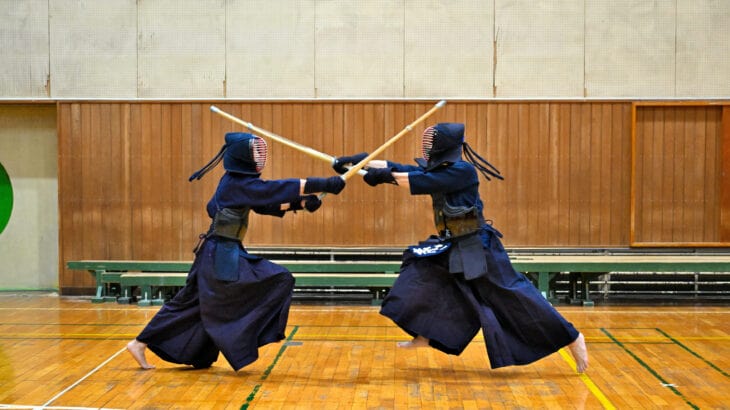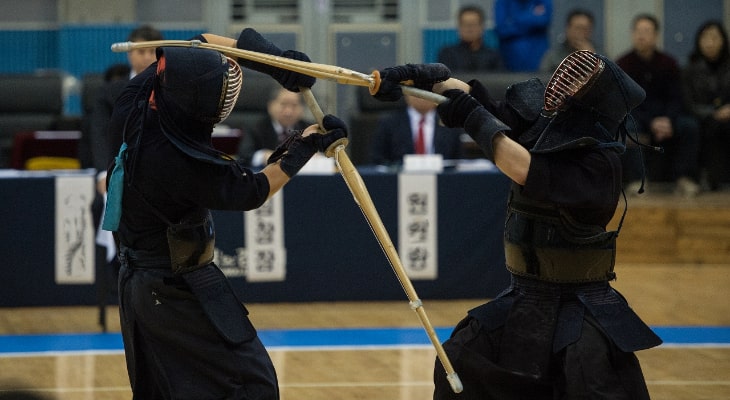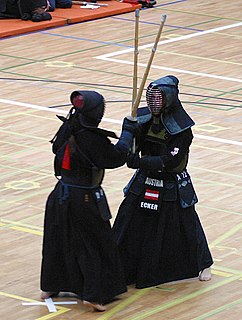
Kendo practice can be practiced effectively not only at the dojo but also at home.
Kendo practice at home provides the perfect opportunity to hone your skills at your own pace, without being tied down by time or location constraints.
In this article, we will introduce a wide range of Kendo practice menus that can be performed at home, and provide detailed explanations of how everyone from beginners to experienced practitioners can effectively practice Kendo at home.
Our goal is to hone kendo techniques, encourage spiritual growth, and deeply understand the essence of the martial art of kendo through a variety of practice menus.
目次
- 1 Introduction: Benefits of starting Kendo practice at home
- 2 Basic Kendo practice menu
- 3 Practice method using sword tools
- 4 Training to improve physical strength
- 5 Drills useful for improving Kendo techniques
- 6 Kendo Kata self-study method
- 7 Kendo practice plan for children
- 8 Frequently asked questions and answers
- 9 Summary and further ways to use home practice
Introduction: Benefits of starting Kendo practice at home
Advantages of home practice
There are many benefits to practicing Kendo at home.
The biggest advantage is that there are fewer time and location constraints.
You can flexibly set your practice time to suit your schedule and save on travel time.
In addition, you can customize the practice content to suit your individual needs, allowing you to focus on specific techniques and movements and practice efficiently.
Furthermore, practicing at home can be done in a private environment, freeing you from external pressures and creating an environment that facilitates self-reflection and improving concentration.
Space and preparation required
When practicing Kendo at home, it is necessary to have an appropriate space.
Ideally, you will have a space of at least 2 meters by 2 meters to practice basic movements.
The floor should preferably be covered with a material that is non-slip and has sufficient cushioning.
Also, to ensure your safety, choose an open space with no walls or furniture around you, and make sure you have plenty of lighting so you can practice in a bright environment.
The basic equipment needed for practice is a bamboo sword and kendo uniform, but if you actually want to practice, you will also need to prepare kendo protective gear.
By making these preparations, you will be able to practice Kendo safely and effectively at home.

Basic posture practice
The basic stance of Kendo is the basis of all techniques.
Acquiring the correct posture will improve the precision of your techniques and enable you to move more efficiently.
In practice, start with the correct standing position. Stand with your feet shoulder-width apart and your knees slightly bent.
Stretch your back and relax your shoulders. While maintaining this basic posture, repeat the practice of breathing in quietly and exhaling slowly.
This will improve your concentration and allow you to naturally learn how to use your body necessary for Kendo movements.
Basics of footwork
Footwork is very important in Kendo.
There are two basic foot movements: “suri-ashi” and “ayumi-ashi.”
Suriashi is a method of gliding without taking your feet off the ground, allowing you to move quickly while maintaining a stable posture.
Ayumi-ashi is a walking style in which you move forward step by step, and is mainly used to adjust distance.
By repeatedly practicing these basic foot movements, you will acquire the basics of movement.

Practice method using sword tools
How to practice swing using a bamboo sword
Practicing with a bamboo sword is the basic practice of Kendo and is essential for improving your technique.
Suburi is a full-body exercise that includes elements of kendo techniques, and trains the coordination of the upper and lower bodies by swinging a bamboo sword.
When practicing swinging, it is important to pay attention to the position of the grip and the amount of force applied to swing the shinai accurately, and to maintain a balance between swinging down and swinging up.
By performing a series of movements fluidly, your Kendo technique will improve.
Tips for target practice
Target practice at home is a great way to hone your skills for real-life competition.
Prepare a practice target or cushion and use it as a target.
At this time, by changing the position of the target, you can change the angle and sense of distance of the shot.
Additionally, by using moving targets, it is possible to train reaction speed and judgment in situations similar to actual matches.
Through these exercises, you can improve your practical skills.

Training to improve physical strength
Strength training suitable for Kendo
The strength training required in Kendo is important to focus on strengthening the upper and lower body.
In particular, strengthening the muscles in your shoulders, arms, and legs will increase the power and speed of your strikes.
Effective training methods include push-ups, pull-ups, and arm curls with dumbbells.
Squats and lunges also strengthen leg strength and help improve stability and endurance.
Performing these trainings regularly will improve your Kendo performance.
Aerobic exercise to increase stamina
Kendo requires high stamina to endure long matches and practices.
Aerobic exercise such as running, cycling, and swimming are effective ways to improve your stamina.
These activities are essential for improving cardiovascular fitness and increasing endurance.
We recommend doing at least 30 minutes of aerobic exercise several times a week.
This prevents fatigue from accumulating during practice and improves performance during matches.

Drills useful for improving Kendo techniques
offensive technique practice
Practicing attacking techniques in Kendo requires an understanding of accurate strikes and timing.
An effective drill is a targeted practice.
For example, practice hitting specific parts (men, kote, torso) accurately.
At this time, it is important to pay attention not only to the speed of the stroke, but also to the accuracy of the stroke, and to perform the series of movements smoothly.
It is also effective to combine practice with imagining your opponent’s movements in order to train your reaction speed.
defensive skills practice
Kendo defensive techniques include well-timed interception and evasion.
Drills that help you predict your opponent’s attacks and respond effectively to them are useful for practicing defensive techniques.
Basic defensive drills include practicing movements to block your opponent’s strikes and practicing footwork to change position before being hit.
Through these exercises, you will develop your ability to read your opponent’s intentions and react quickly and appropriately in a real match.

Kendo Kata self-study method
Step-by-step guide to Kata practice
In order to study kendo kata by yourself, it is important to first understand the kata movements in detail.
First, practice each movement that makes up the kata individually to understand the technical gist and purpose of each movement.
Next, combine these movements in order to get the flow of the overall shape.
By practicing step by step, the sequence of movements will naturally become ingrained in your body.
It is important to regularly self-evaluate, check your posture, footwork, and accuracy of strikes, find areas for improvement, and make corrections.
Utilizing Kata video teaching materials
When learning Kendo Kata, it is very effective to use video teaching materials.
Watch videos of kata performed by professional kendo players and check the fine points and timing of the movements.
By using videos, you can watch the kata being demonstrated over and over again, making it easier to accurately understand the actual movements.
When practicing at home, you can help you understand the kata and improve your technique by watching videos and trying to imitate the same movements.

Kendo practice plan for children
Kendo training for children requires different approaches depending on their age.
For small children, we provide practice menus that allow them to have fun while learning the basics of Kendo, starting with the basic postures and walking methods.
As children grow older, we incorporate more specific technique and form exercises to increase accuracy and depth of understanding of techniques.
By providing practice content suitable for each age group, we are able to continuously develop children’s Kendo skills and interest.
How to create a safe practice environment
It is very important to create an environment where children can practice Kendo safely.
The practice space should be large enough and the floor should be covered with soft, non-slip mats.
In addition, a supervisor must always supervise the child during practice, and the practice equipment must be appropriate to the child’s size.
To minimize the risk of injury, it is important to wear appropriate protective gear and to thoroughly teach children about safety rules.

Frequently asked questions and answers
FAQ about home practice
Q1: What is the most important thing when starting Kendo practice at home?
A1: Securing appropriate space and creating a safe environment. Check your surroundings to ensure you have enough space to move safely and have the necessary equipment to reduce the risk of injury.
Q2: How can I maximize the effectiveness of practicing at home?
A2: It is important to have a practice plan and practice on a regular schedule. It is also effective to check technical points using video teaching materials.
Q3: What should I be especially careful about when practicing Kendo at home?
A3: Always put safety first, and if you are unfamiliar with techniques, seek professional guidance or carefully practice from the basics. Also, don’t forget to warm up and cool down properly.
Common misconceptions in Kendo practice
Myth 1: The idea that practicing at home is less effective than practicing at the dojo
This is a misconception. With the right environment and guidance, you can achieve great results even at home. This is a great opportunity to improve your self-management skills and develop your independence.
Misconception 2: You can’t practice Kendo at home without special equipment
A lot of practice is possible at home as long as you have a basic Shinai sword and the appropriate protective equipment. Even if you don’t have the perfect equipment, you can practice many skills with your ingenuity.

Summary and further ways to use home practice
How to judge practice results
Regular self-assessments are effective in determining the results of your home kendo practice.
Track your technical progress with diaries and video recordings and evaluate your progress against specific skills.
It’s also helpful to ask outside Kendo practitioners for feedback from time to time.
How to maintain continuous learning and motivation
To maintain continuous learning, it is important to try new techniques and forms.
It also keeps you motivated by adding variety to your practice.
For example, by incorporating different types of kendo drills and reading books and materials related to kendo, you can gain new knowledge and put it into practice.
By setting goals and achieving them, you can be sure of your success.



